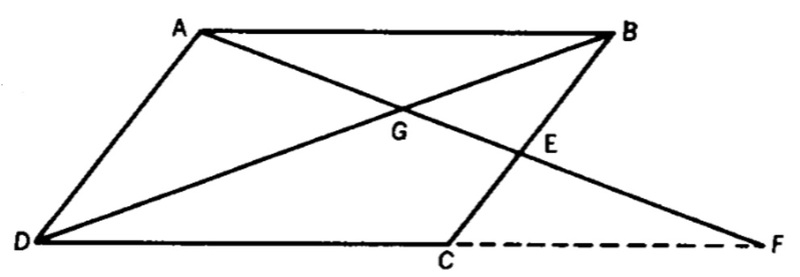Find EF

In the figure, A B C D is a parallelogram, A G = 6 , and G E = 4 . Find E F .
The answer is 5.
This section requires Javascript.
You are seeing this because something didn't load right. We suggest you, (a) try
refreshing the page, (b) enabling javascript if it is disabled on your browser and,
finally, (c)
loading the
non-javascript version of this page
. We're sorry about the hassle.
2 solutions
@Marvin Kalngan , I have provided a solution. You don't need to put ABCD, AG, and GE is \text{}. They are meant to be in italic as in thousand of questions in the Brilliant website. The regular non-italic form is reserved for function names. I have amended your problem question.
We note that △ B E G and △ A D G are similar. Therefore A D B E = G E A G = 4 6 = 2 3 . We also note that △ A D F and △ A E B are similar, therefore
A E A F A F A G + G E + E F ⟹ E F = A D B E = 2 3 = 2 3 × A E = 2 3 ( A G + G E ) = 2 1 ( A G + G E ) = 2 1 ( 6 + 4 ) = 5
Since, △ F D G ∼ △ A B G , G A G F = G B G D
And, △ B G E ∼ △ D G A , G B G D = G E G A
By transitivity, G A G F = G E G A
By substitution, 6 4 + E F = 4 6
4 ( 4 + E F ) = 6 ( 6 )
1 6 + 4 E F = 3 6
4 E F = 2 0
E F = 5